Plan To Get These Heat Loving Succulents Before Next Summer
Finding succulents that can tolerate high heat can be tricky. But one of the best ways to ensure success is to plant them in the fall so they have plenty of time to acclimate and develop deep roots before summer. Plus, many of these succulents grow most when the weather is cooler. This means they'll be even larger when summer comes, and better able to withstand the heat.
Important Note
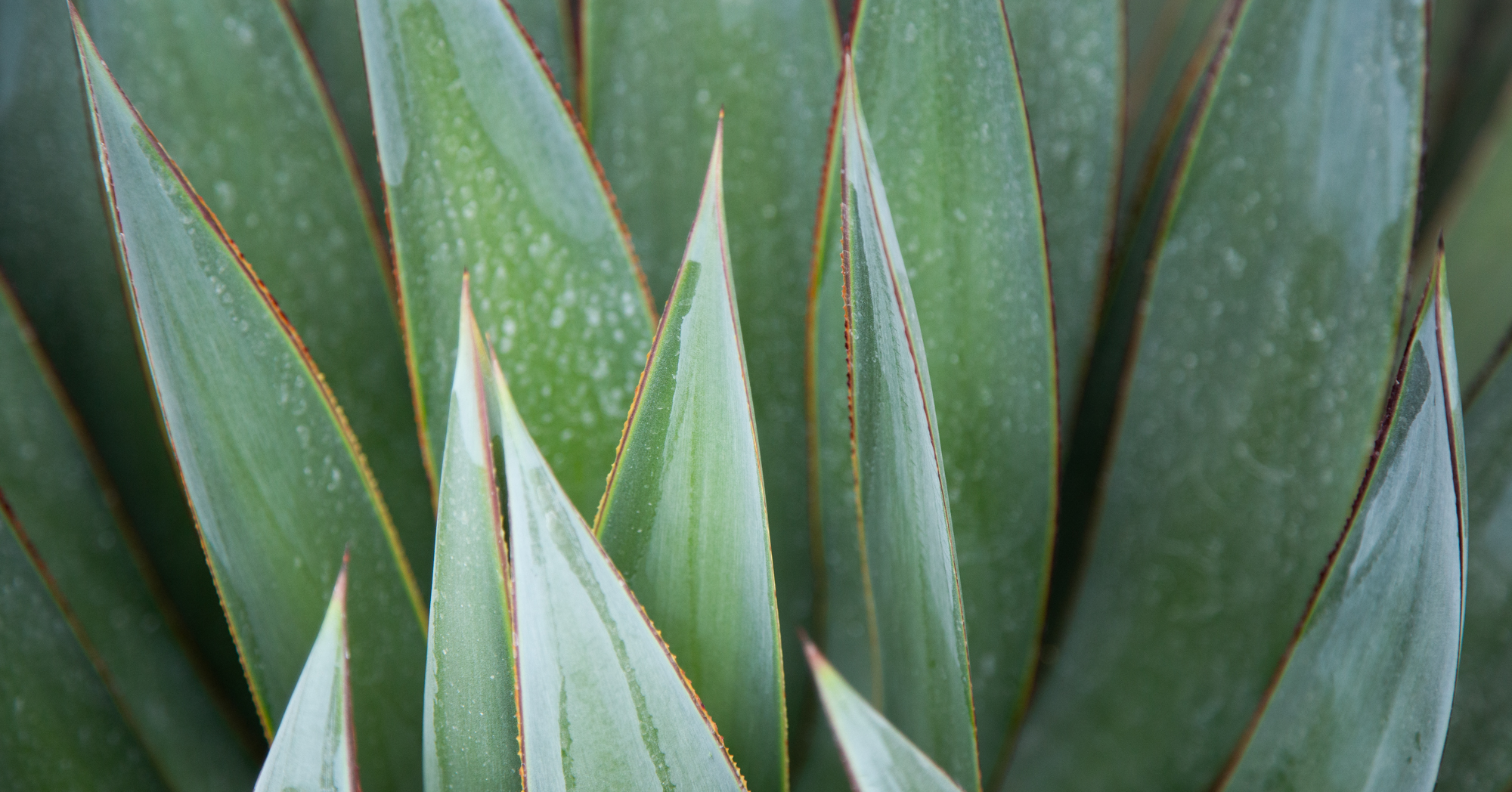
While the succulents listed here can tolerate extreme heat and sunlight, make sure you plant in the cooler months of the year and allow them time to get well established before the extremes set in. Also, unless mentioned otherwise, these succulents are rated for Zone 9 -- meaning they won't survive in a four-season climate.
If not properly acclimated to the heat and sun, these plants can get a "sunburn" which damages the plant and they likely won't make it through the summer.
Climbing Aloe
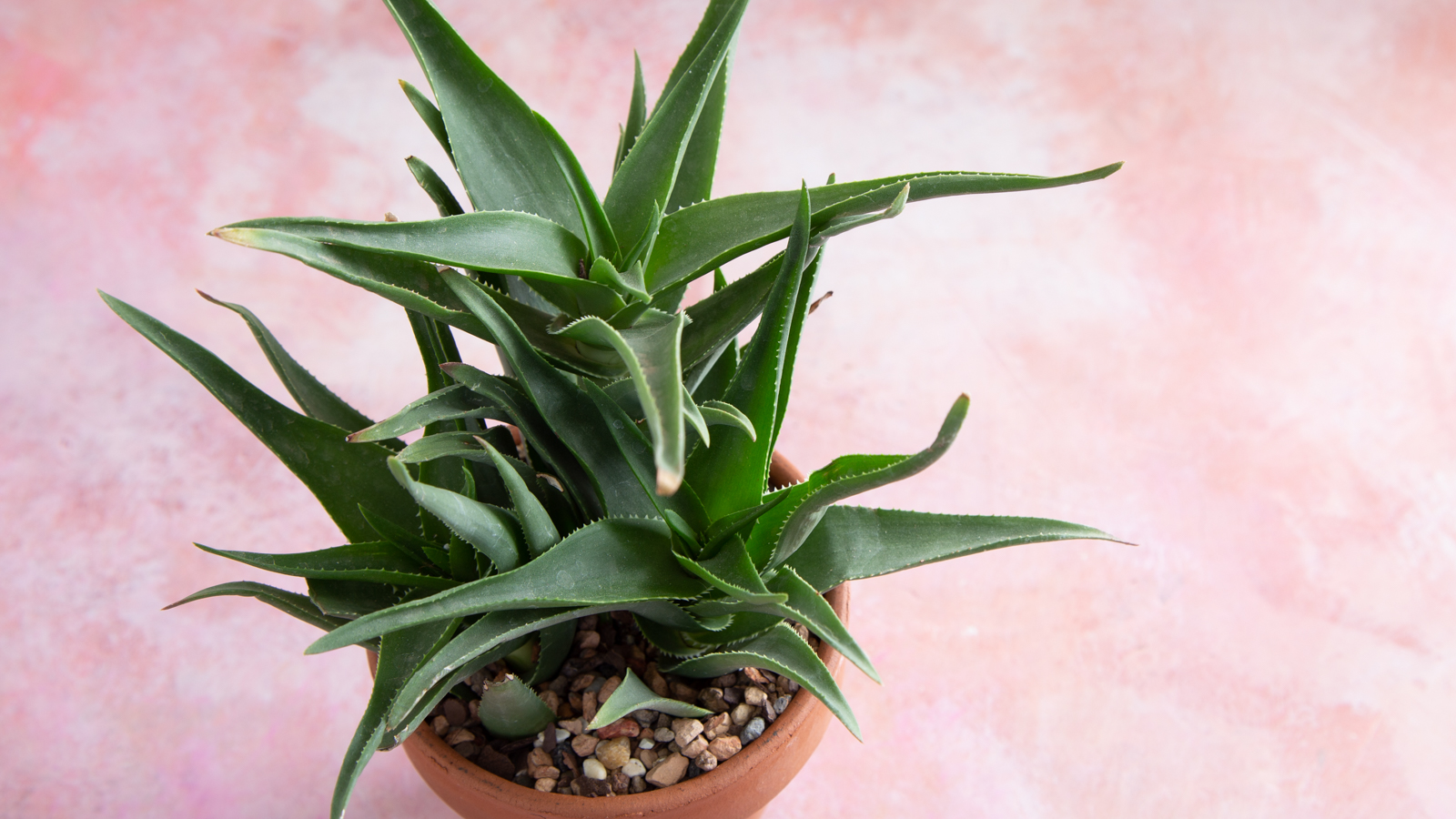
Aloiampelos ciliaris stands out from other Aloes and succulents due to its ability to grow in a vine-like manner. It can be used as a hanging plant with each branch flowing over the edge of a pot or planter. You can easily propagate this succulent by cutting off part of the plant, letting it dry out, and then putting the cut end into the soil. It also naturally produces new branches or offsets on its own.
While this succulent can tolerate extreme heat and sunlight, it will also thrive in shadier areas as well. If grown indoors make sure to water it infrequently to slow its growth and prevent stretching.
Lampranthus glaucus
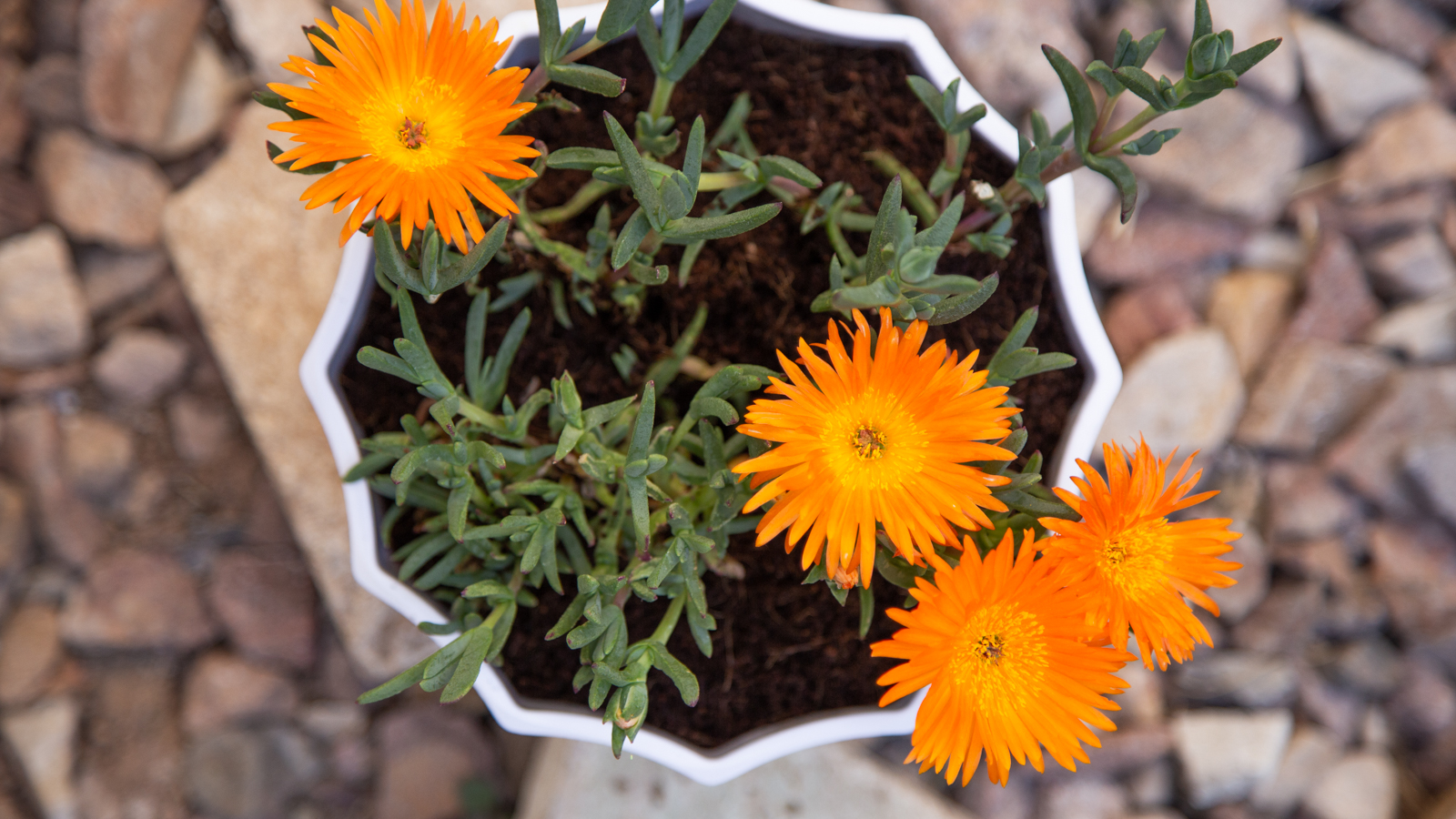
Another name for Lampranthus glaucus is Ice Plant, which is a bit ironic considering it can handle extreme heat and sunlight. Of all the succulents on the list, this one is most susceptible to sunburn, so make sure you fully acclimate this plant to the area in the fall, giving it plenty of time to root and grow before the hot weather sets in. You can easily find this succulent with a variety of flower colors including the stunning orange you see here, yellow, pink, and purples.
It is a groundcover succulent and spreads easily on its own, with long trailing branches. It's also very easy to propagate from cuttings.
Portulacaria afra
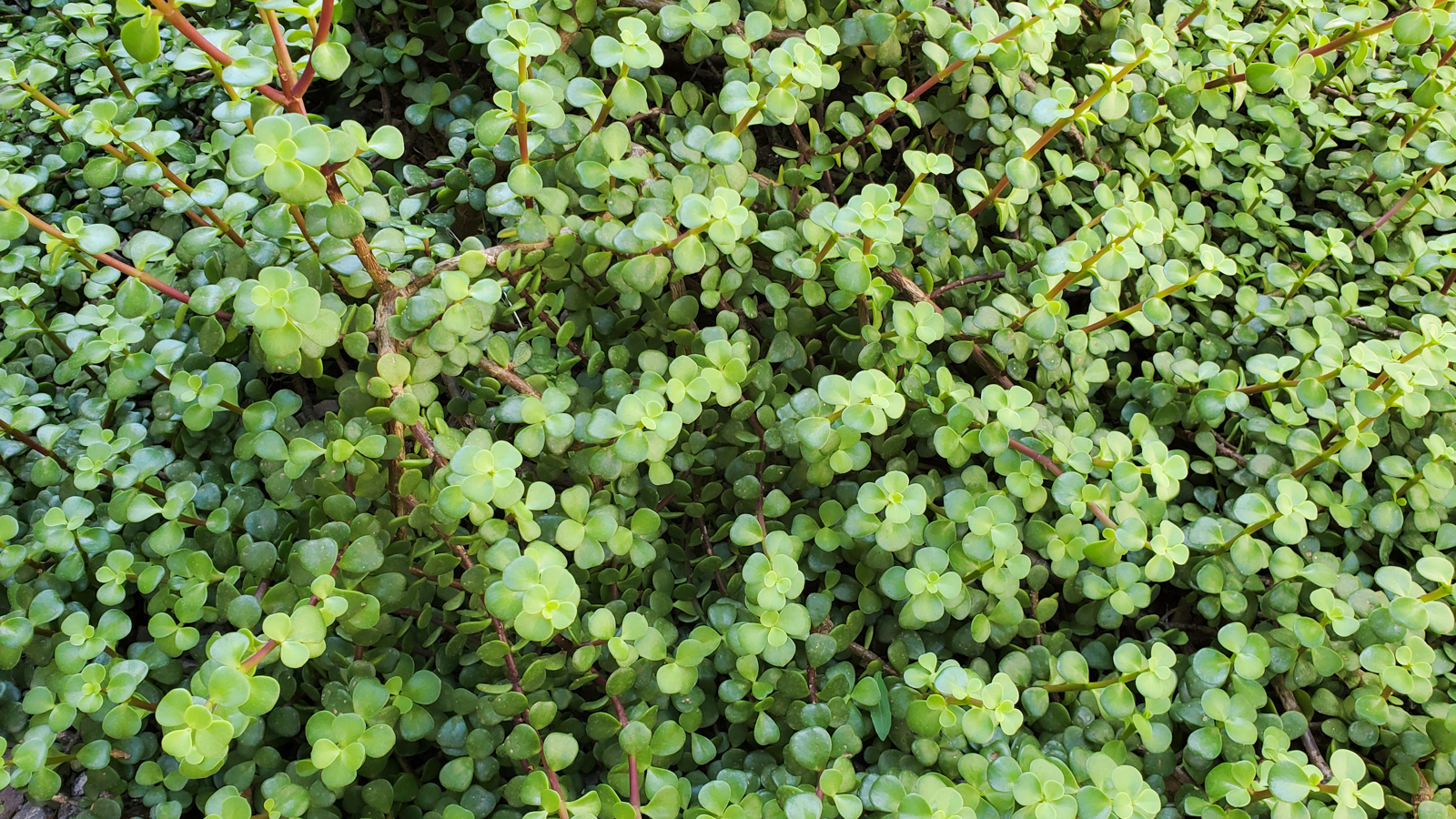
Also known as Elephant Bush, this succulent will hold up under temperatures well over 100°F in full sun. It adds a beautifully lush look to the desert landscape. While you'll often see it in mounds or looking like a very tall ground cover, it can grow to be 12ft tall. Often the branches bend over due to their own weight giving it more of a mound-like look. Over time the branches will thicken giving the plant more structure and support.
Portulacaria Afra is often confused with Jade or other Crassulas, but it's in a class of its own and much more durable in the heat and sunshine. You'll find it's very easy to propagate and you can easily grow a new bush by cutting off one of its branches.
Dinosaur Back Cactus
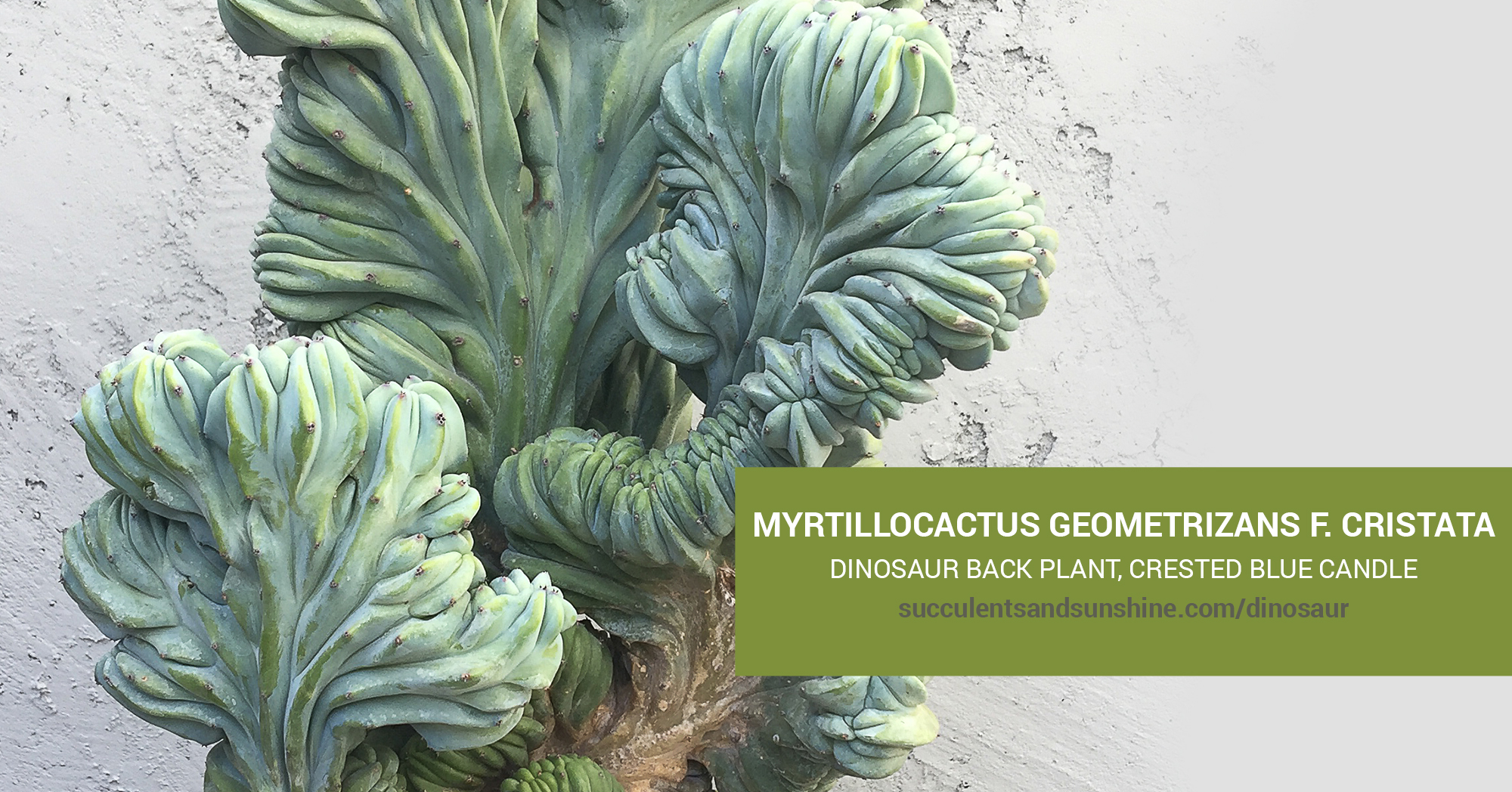
This unique Dinosaur Back Cactus has intricate swirls and folds along the edge of its wavy arms. It has a lot fewer spines than most other cactus varieties, but can still leave some spines in your fingers. The rest of the plant has a pale smooth finish that can change from green to blue to purple depending on the time of year and the amount of sunlight it gets.
Agave potatorum
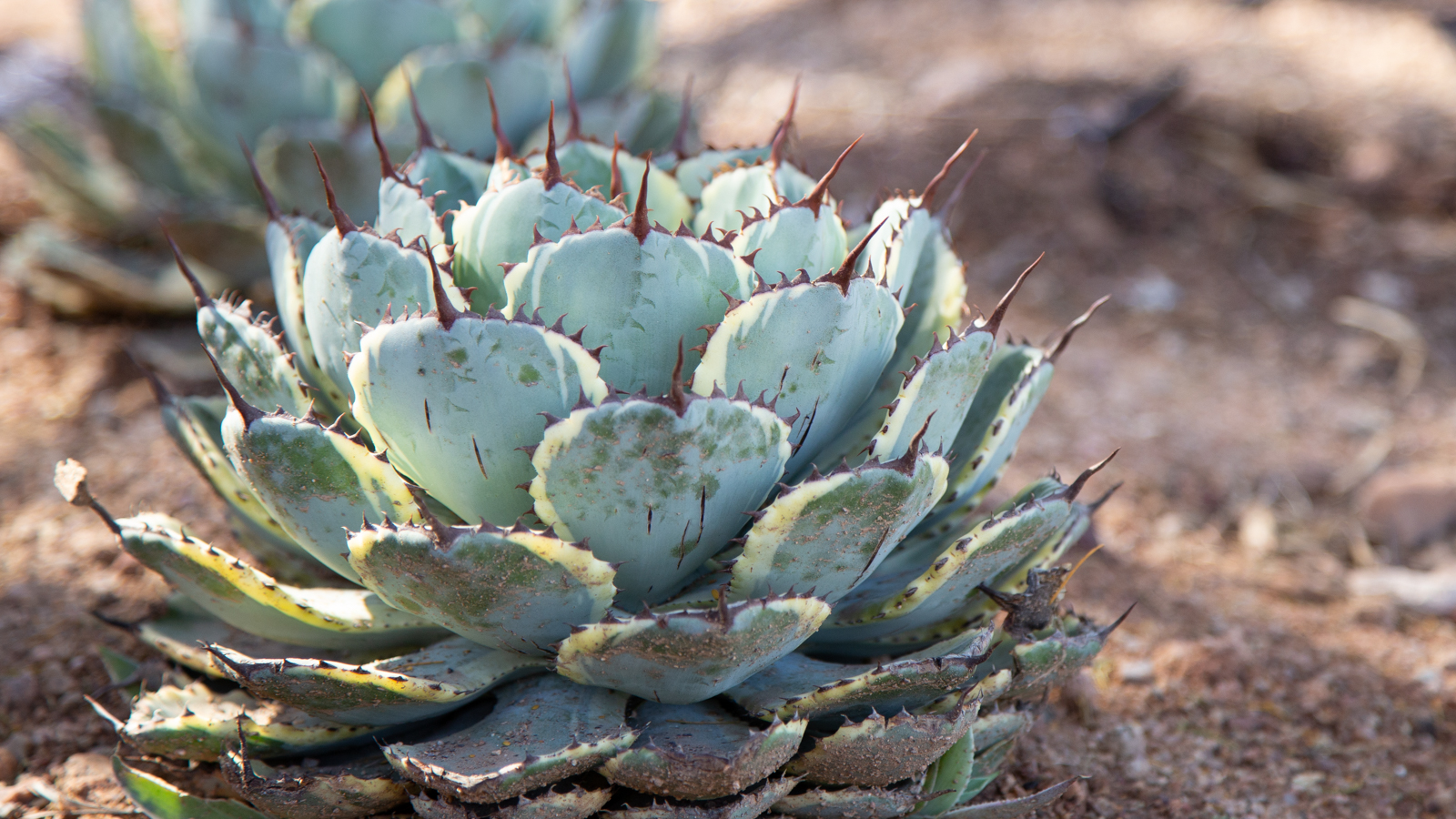
Similar to Agave truncata, this spikey plant has lots of color and texture all combined into one plant. It has a really distinct color pattern with deep brown spikes along cream-colored stripes and minty green leaves. While many variegated plants have a hard time in extreme heat, this variety can handle lots of sunshine even when temperatures get over 100°F.
Sticks on Fire
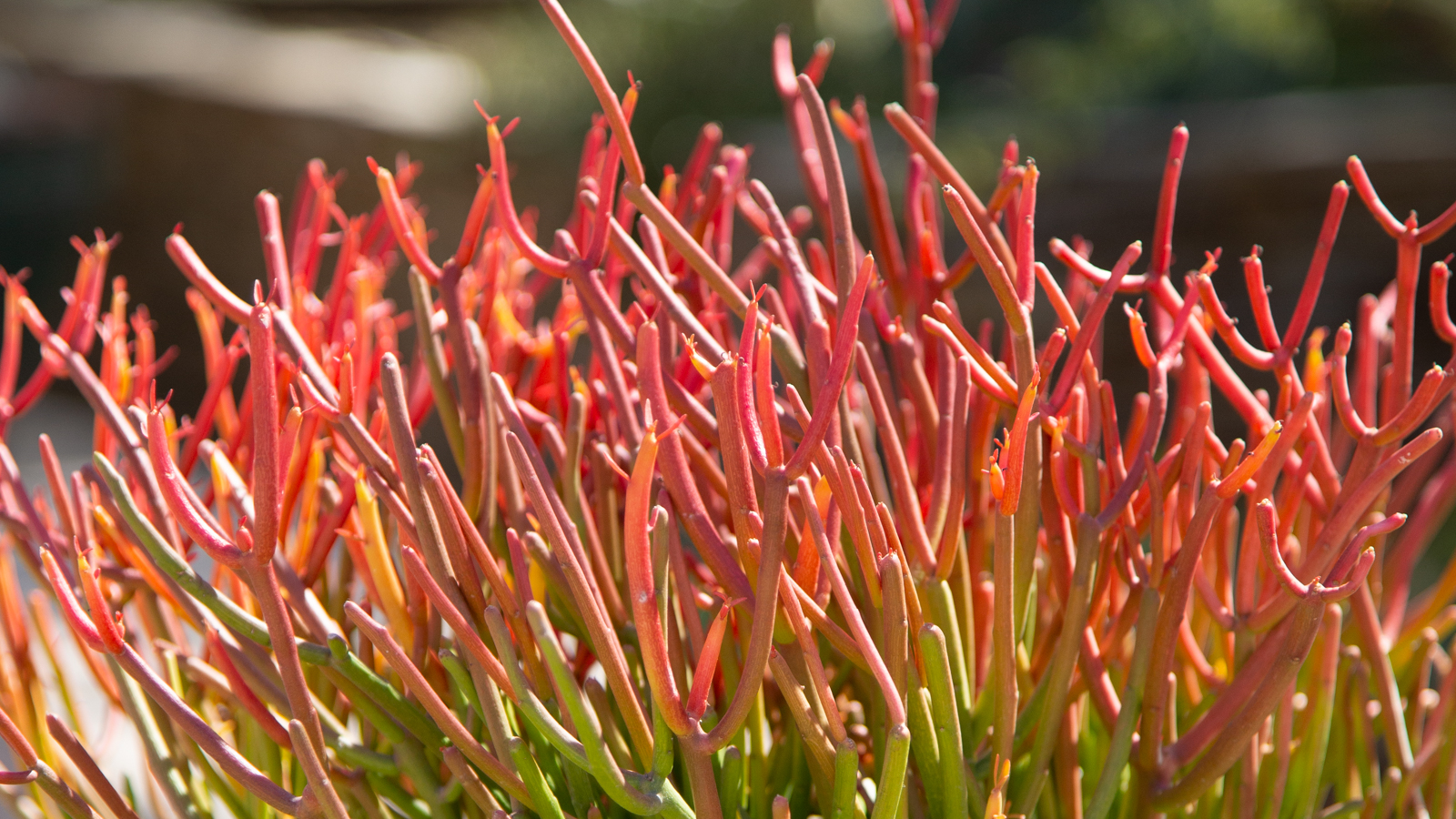
This succulent looks like a flame, but Euphorbia tirucalli 'Sticks on Fire' is a great succulent for hot sunny climates. While often seen in small bushes or clumps, this plant can get quite large and provides a colorful backdrop behind shorter plants. It holds up well with lots of sunshine in the summer and tends to show off its deepest reds when temperatures are just above freezing.
Be careful with where you plant (and how you handle it) it as it has a sap inside that can be toxic -- causing extreme irritation on the skin.
Opuntia macrocentra
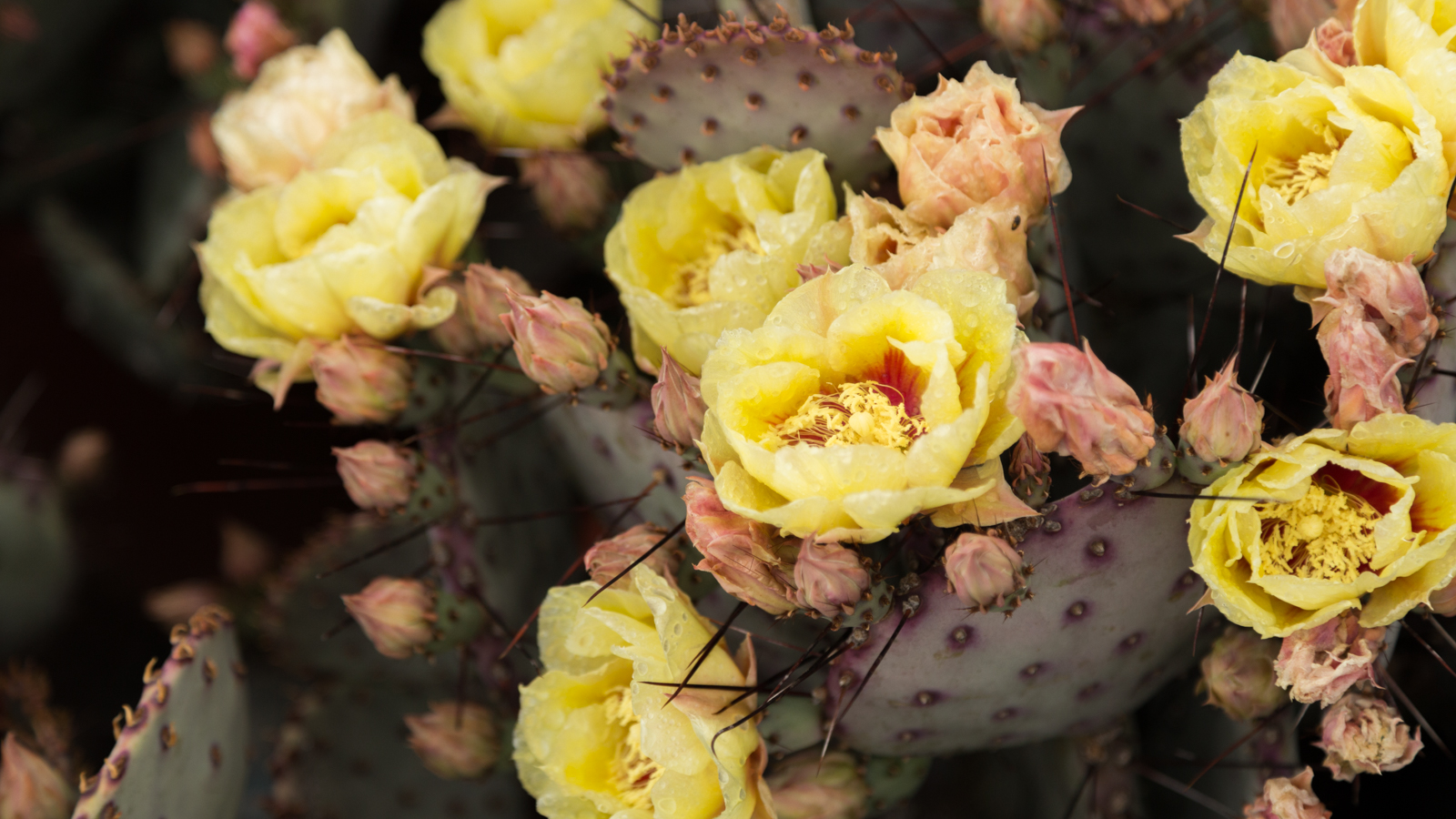
You can't think of hot climates without thinking of Opuntia. This variety has long black spines and can turn a stunning purple in colder temperatures or with lots of sunlight. You'll also see beautiful rose-like flowers each spring. The delicate petals provide a sharp contrast to the long black spines.
This cactus is great for use in landscapes that won't get a lot of foot traffic as they can get quite large and grow very easily with minimal watering.
Agave attenuata
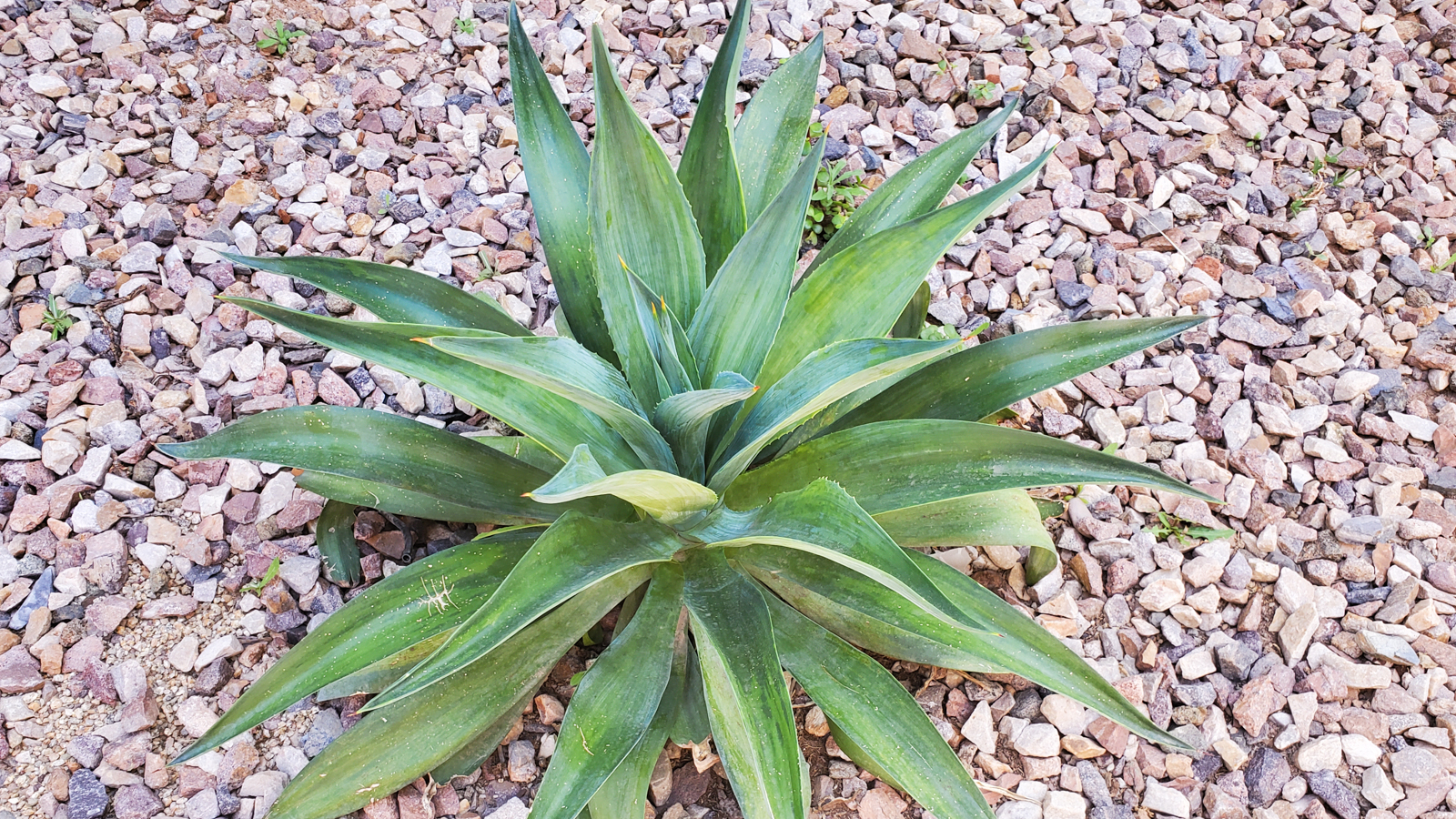
These smooth green agave leaves hold up incredibly well under the hot Arizona sun. Foxtail Agave is a popular plant in the Southwestern United States since it doesn't look like your typical desert plant. It does have a sharp point on the end but otherwise has much less of a bite than other heat-loving succulents.
This Agave also produces a lot of new pups each year so it's the plant that keeps on giving.
Mangave 'Bloodspot'
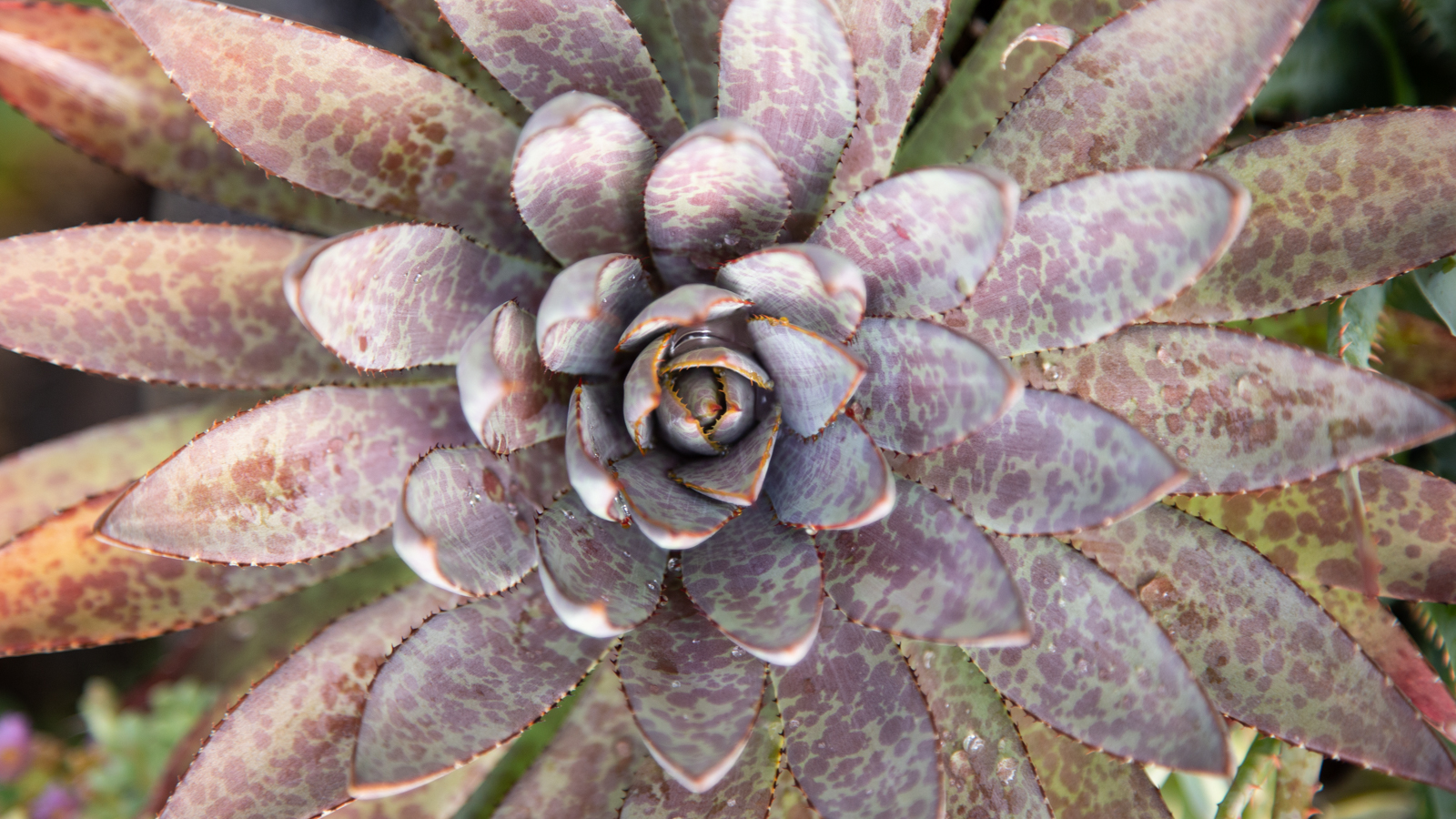
Mangave are a relatively new succulent to the market but they are quickly becoming popular. 'Bloodspot' along with other varieties has stunning colors and patterns that make a great addition to any full sun garden. The deep purples are sure to catch your eye and add visual interest all year round. Some Mangave varieties can grow quite large and are well suited for growing in the ground. Others stay small which allows them to grow well in potted arrangements.
Save Your Succulents With This Critical Watering Technique And Look Like A Pro
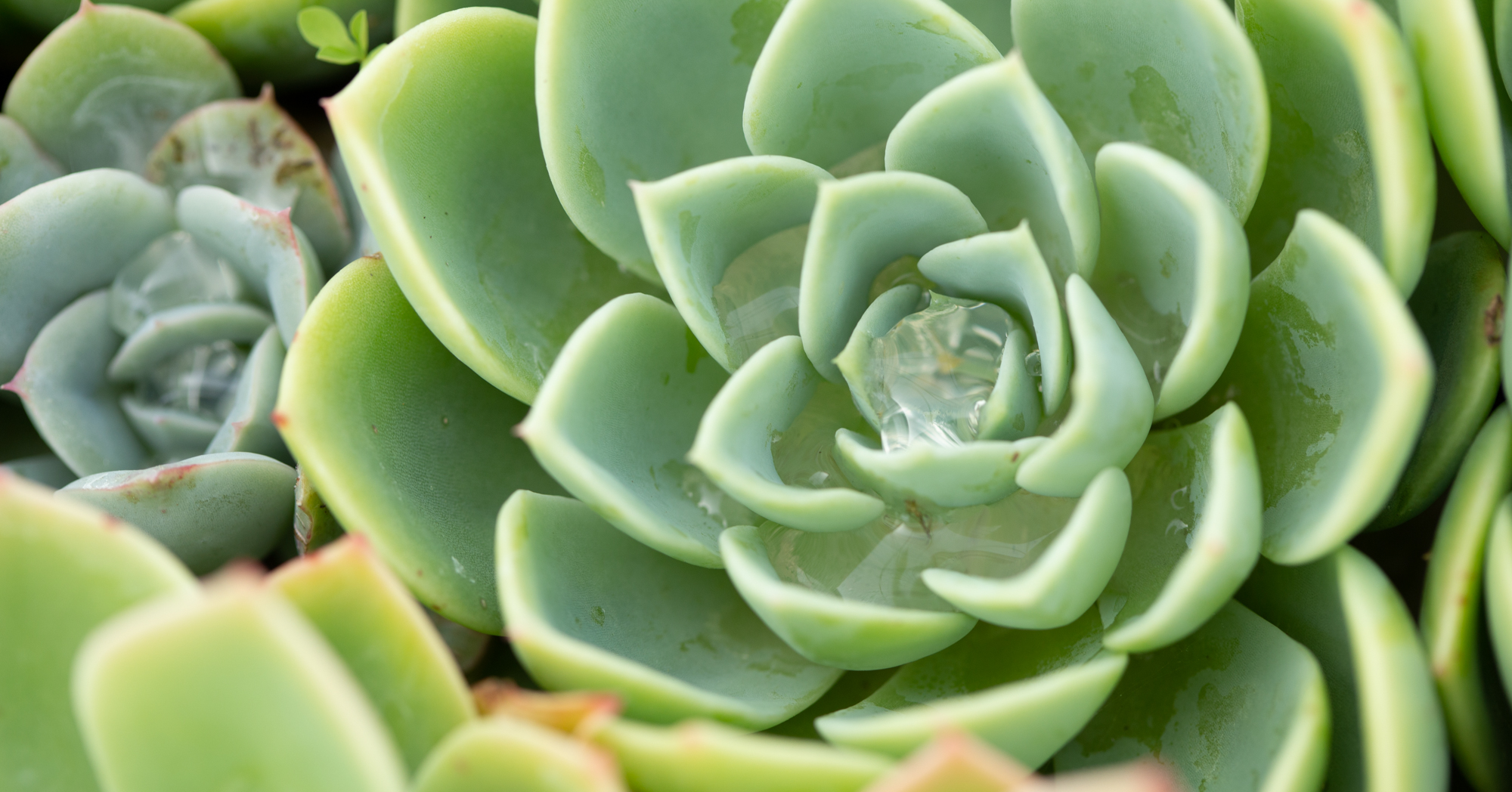
A big part of keeping succulents healthy is providing them with the right environment. You'll want to pay attention to the soil they're in, how much sunlight they're getting, and most importantly, how often you're watering them. The method and frequency of watering succulents are critical to preventing rot while encouraging lots of new growth.
More Amazing Succulent Varieties
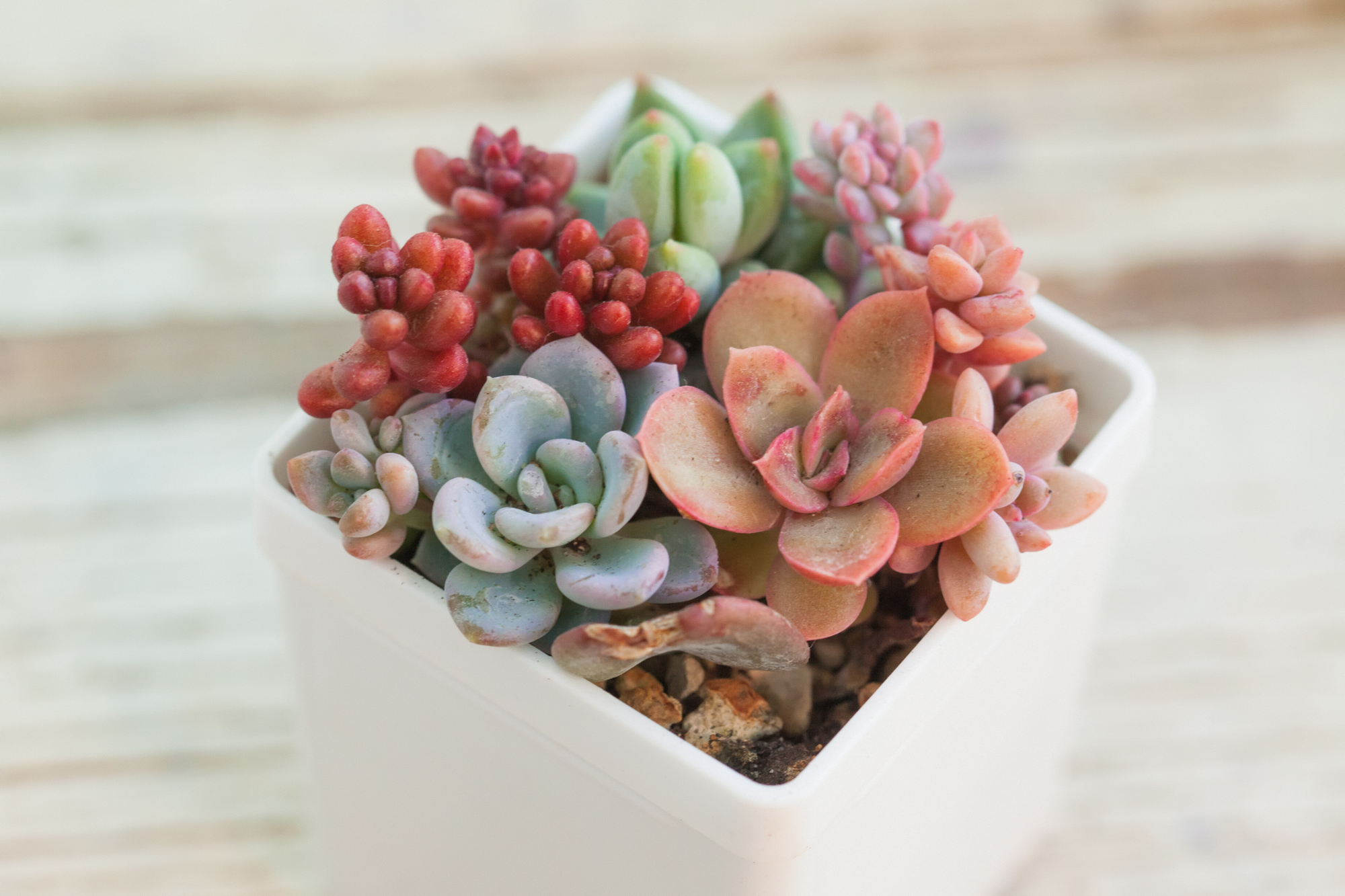
While not all succulent plants are fans of extreme heat and sunlight, you're sure to find some that will grow well in your climate. Choosing succulents that are suited to your care style and growing environment will help you be more successful in keeping your succulents alive.
Has Your Succulent Lost Its Color?
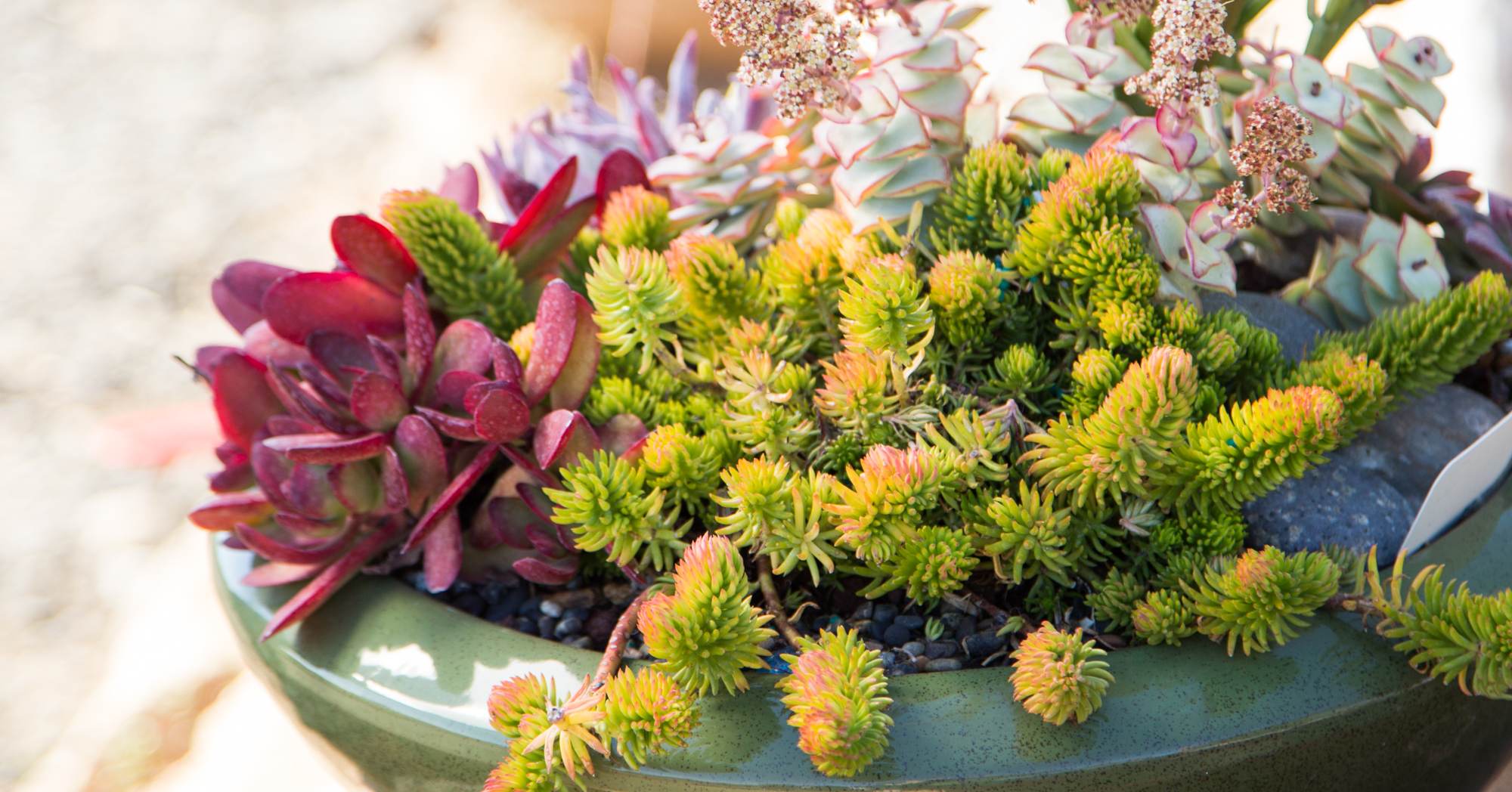
The succulents in this list can all tolerate low light. But most colorful succulents won't fare so well. There are a number of factors that help keep your succulents colorful, including how much light they get. Even some of these "low light" succulents will look a little better with more light. Find out how to give your succulents healthy stress and bring out their brightest colors.
Expert Tips for Creating Stunning Succulent Arrangements
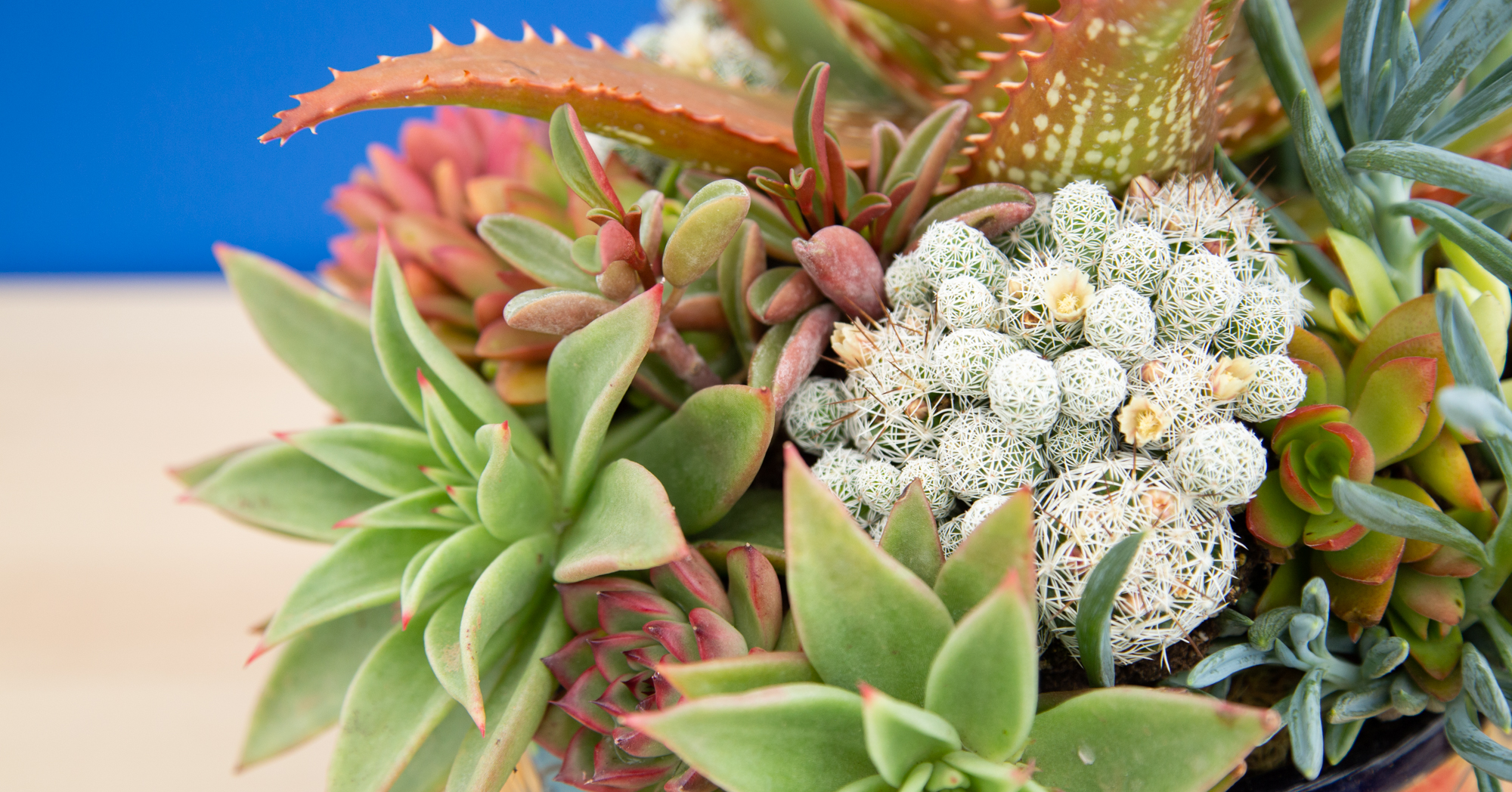
Figuring out which succulents to combine together to make a beautiful arrangement can be daunting. But with these tips from succulent design experts, you'll be able to put together crowd-pleasing arrangements easily, whether it's in pots or in the ground.
Get more succulents for free with this simple propagation technique
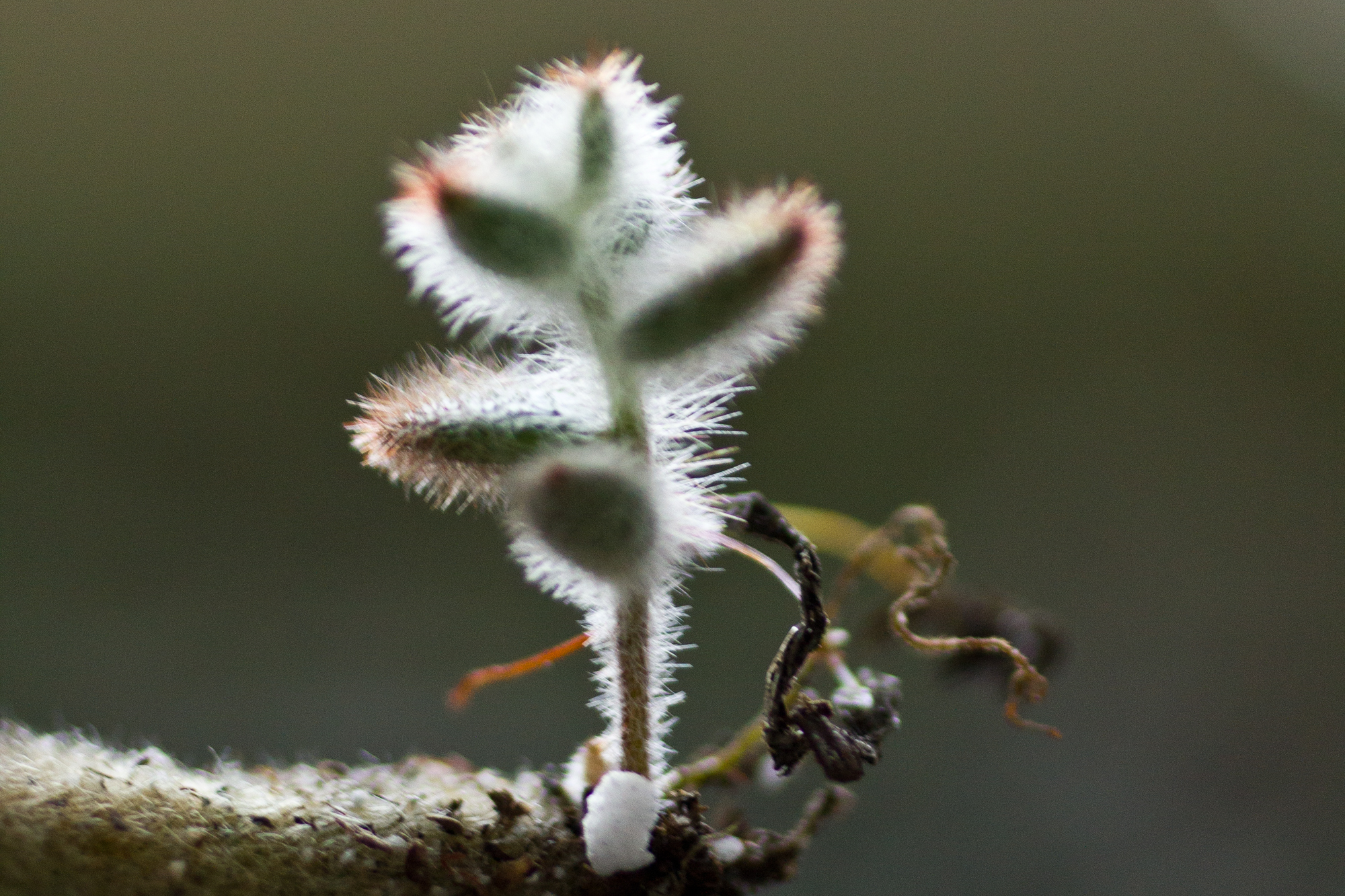
One of the best things about growing succulents is how easily they propagate (grow new baby plants). Propagating succulents from leaves is extremely fun and a rewarding way to get more plants without having to buy new ones. Learning this simple technique can be quite addicting but may help keep your plant budget on track.
This article originally appeared on Succulents and Sunshine.